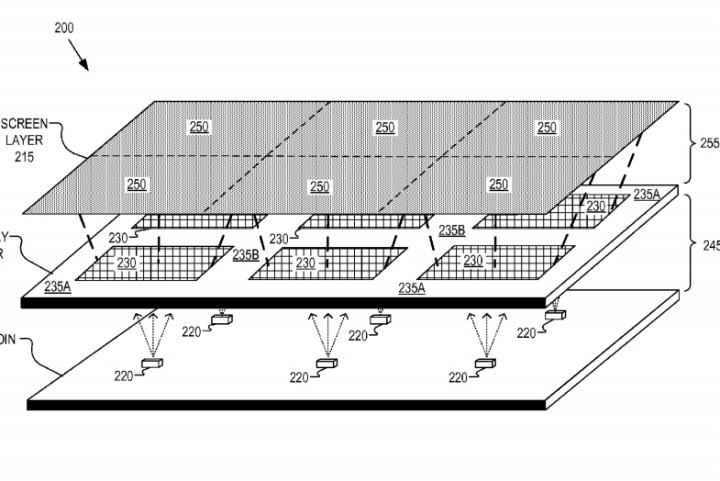
All right, so what will that mean in practice? As it stands, there are really three methods for creating a giant wall-mounted display. One, you can just buy a giant screen, or several giant screens and panel them together. Two, you can panel together smaller, cheaper screens, but you have unsightly seams where the bezels meet. Or three, you can just use a projector.
If you’ve ever seen a big multi-screen display, like they have at electronics stores, or at awards shows, you know that these displays look good from far away, but the closer you get the easier it is to discern the seams between each panel. This new patent application aims to alleviate that by using “bright-edge” displays that eliminate those seams entirely.
The displays, as described in the patent application, are essentially bezel-free. The display goes from edge to edge, so if you tile two or more such displays beside one another, it’s almost impossible to determine where one display ends and another begins.
Not everyone is in the market for a gigantic wall-mounted display made of tiled display panels, but this technology could be used to eliminate bezels on smaller, desktop displays. So a multi-screen setup doesn’t have those pesky seams in the middle. Instead, it would appear to have one continuous display surface.
Unlike some patents Google files, this one might actually become a reality in the near future. According to a similar patent from 2013, Google has been working on seamless tileable displays for a long time, so this isn’t like their eye-implant patent from last year. These things might actually make it to the market before long, or be used in a product that Google’s dreaming up. For more details, you can read the full patent here.
Editors' Recommendations
- IPS vs. VA displays: Which is best for your monitor or TV?
- Google adds dark mode and multiple accounts with new update for smart displays
- Google’s Nest Hub will soon act as a concierge for your next hotel stay
- Google’s coronavirus info site is live (but not as Trump described it)
- New Google and Adidas smart insole can turn your soccer moves into FIFA rewards


